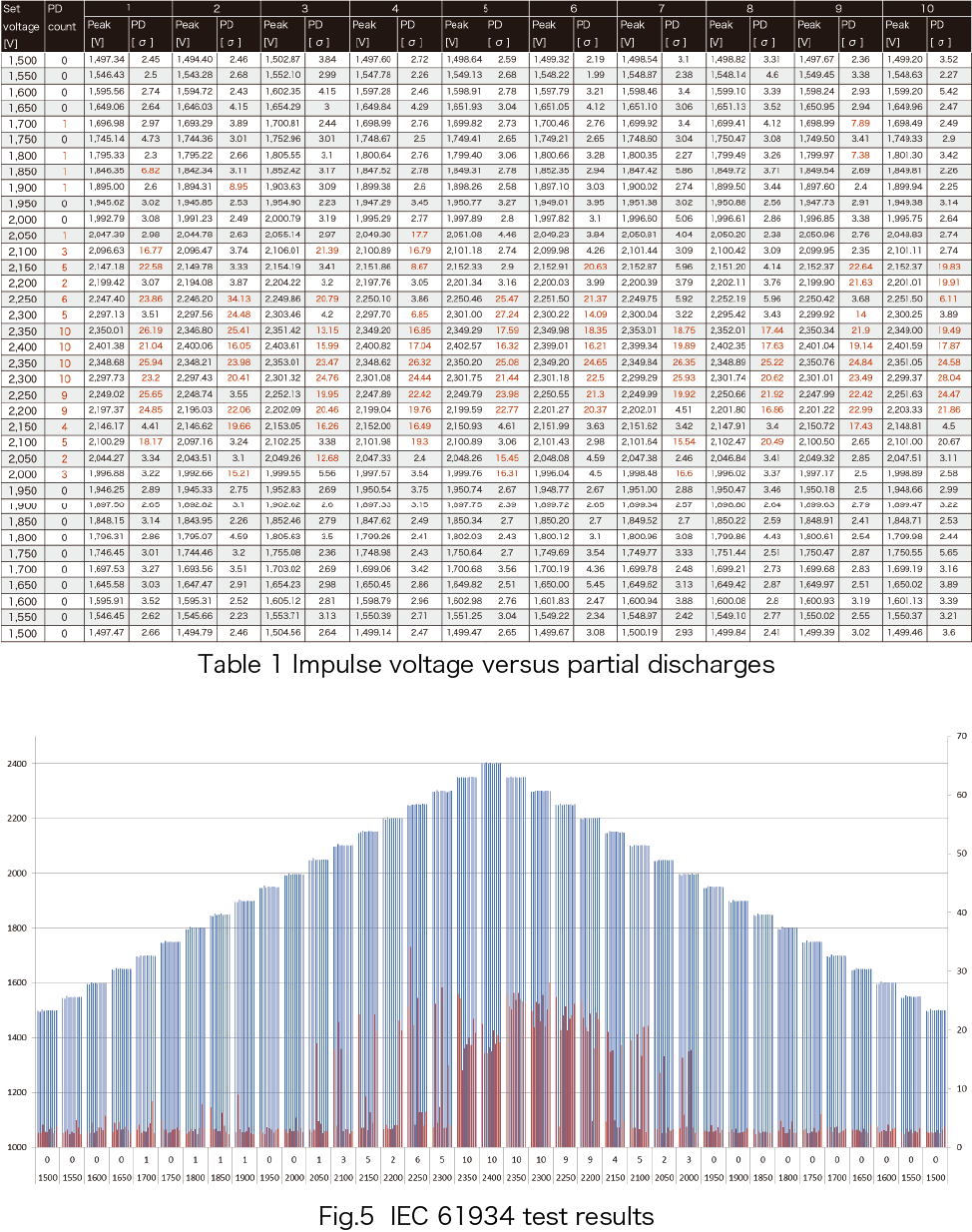Automatic partial discharge (RPDIV) using impulse voltages as defined in IEC 61934
With conventional impulse testers, it is difficult to automatically perform partial discharge (RPDIV) testing as defined in IEC 61934. Sequence Maker, a free Excel add-in, quickly creates programs that make it possible to automate such testing.
Problem
IEC 61934 defines the following test procedure:
• Determine the minimum test voltage at which no partial discharge is detected as well as the maximum test voltage at which a partial discharge is always detected.
• Progressively raise the test voltage while applying each same test voltage multiple times (for example, 10 times).
• The first impulse voltage at which a partial discharge is detected is PDIV.
• The impulse voltage at which a partial discharge is detected 5 out of the 10 applications is RPDIV.
• Progressively lower the test voltage from the maximum test voltage to the minimum test voltage.
• The minimum voltage at which 5 partial discharges are detected is RPDEV.
• The impulse voltage at which partial discharges are no longer detected is PDEV.
With conventional impulse testers, it is difficult to automatically perform partial discharge (RPDIV) testing as defined in IEC 61934.

Solutions
Hioki programmed a sequence that can perform the IEC 61934 test procedure using Sequence Maker (an Excel add-in) and used it to control an ST4030A Impulse Winding Tester. A sequence of commands corresponding to buttons on the instrument can be created in the order of button operation, and data receive commands can be executed to receive the data in Excel. In this way, it is possible to create a program in a short period of time. (See Figs. 3 and 4.)

Measured data
Measurement yielded the following results: PDIV = 1700 V, RPDIV = 2150 V, RPDEV = 2100 V, and PDEV = 1950 V.
The test voltages were initially set in 100 V increments, but the results indicated that the interval was too large. RDIV was detected right away, without detecting PDIV. The partial discharge (PD) threshold value was determined to be σ ≧ 6.
Fig. 5 provides a graph of the results.

Summary
● Sequence Maker can be used to automatically measure the PDIV, RPDIV, RPDEV, and PDEV impulse voltages according to the test procedure defined by IEC 61934.
● Since Sequence Maker is an Excel add-in, it only requires users to memorize how to use commands in order to easily create sequence programs.
Application precautions:
• The application can be used to control the ST4030 and ST4030A.
• The ST4030 and ST4030A’s firmware must be updated.
• Sequence Maker can be downloaded free of charge from the following
Download “Sequence Maker”
• Sequence Maker can also be downloaded from the URL provided in the User Manual.
• Please contact a Hioki salesperson if you require a sample program.

